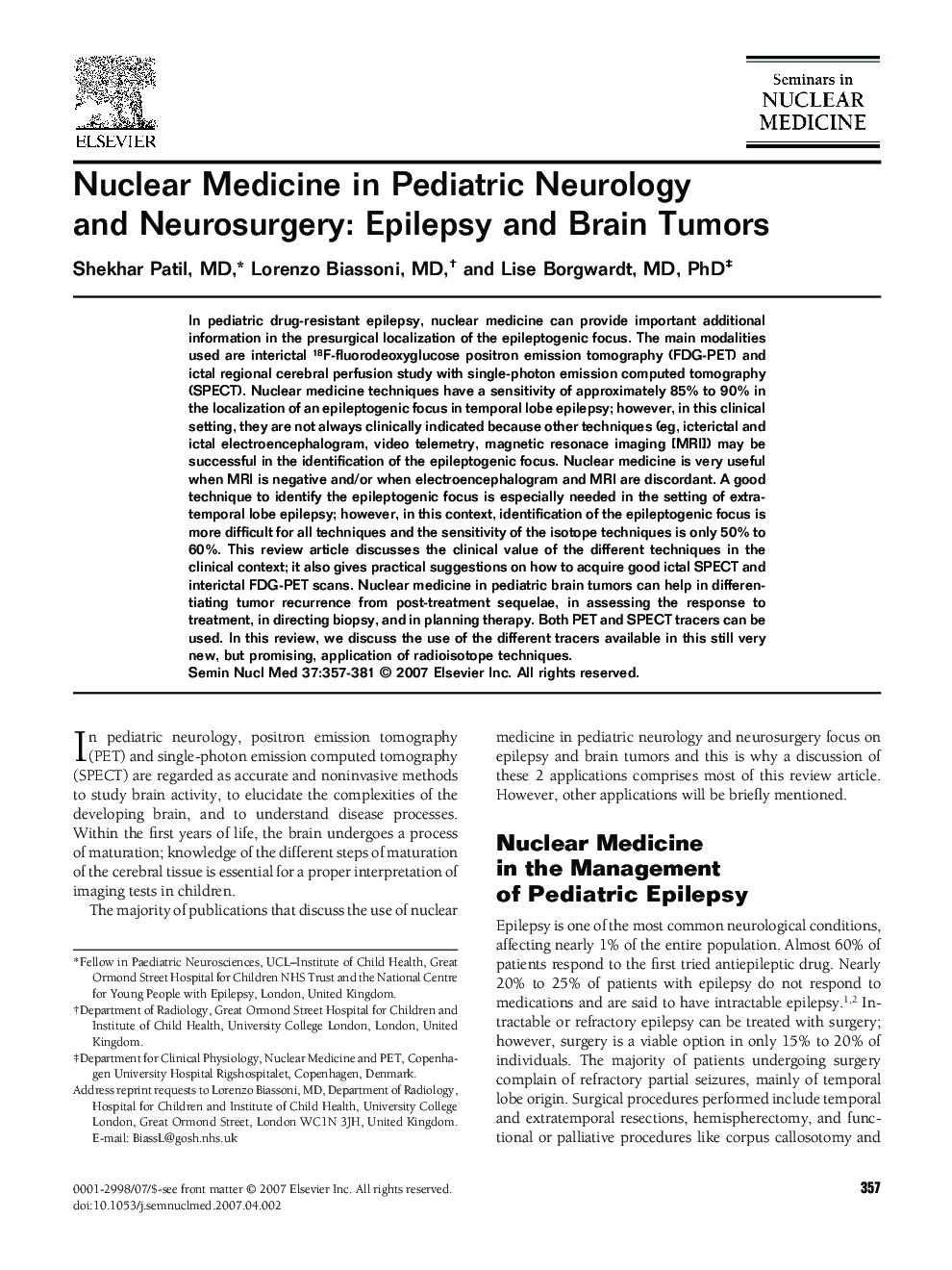| Article ID | Journal | Published Year | Pages | File Type |
|---|---|---|---|---|
| 4251430 | Seminars in Nuclear Medicine | 2007 | 25 Pages |
In pediatric drug-resistant epilepsy, nuclear medicine can provide important additional information in the presurgical localization of the epileptogenic focus. The main modalities used are interictal 18F-fluorodeoxyglucose positron emission tomography (FDG-PET) and ictal regional cerebral perfusion study with single-photon emission computed tomography (SPECT). Nuclear medicine techniques have a sensitivity of approximately 85% to 90% in the localization of an epileptogenic focus in temporal lobe epilepsy; however, in this clinical setting, they are not always clinically indicated because other techniques (eg, icterictal and ictal electroencephalogram, video telemetry, magnetic resonace imaging [MRI]) may be successful in the identification of the epileptogenic focus. Nuclear medicine is very useful when MRI is negative and/or when electroencephalogram and MRI are discordant. A good technique to identify the epileptogenic focus is especially needed in the setting of extratemporal lobe epilepsy; however, in this context, identification of the epileptogenic focus is more difficult for all techniques and the sensitivity of the isotope techniques is only 50% to 60%. This review article discusses the clinical value of the different techniques in the clinical context; it also gives practical suggestions on how to acquire good ictal SPECT and interictal FDG-PET scans. Nuclear medicine in pediatric brain tumors can help in differentiating tumor recurrence from post-treatment sequelae, in assessing the response to treatment, in directing biopsy, and in planning therapy. Both PET and SPECT tracers can be used. In this review, we discuss the use of the different tracers available in this still very new, but promising, application of radioisotope techniques.
